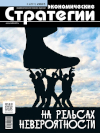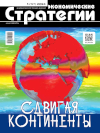Searching for New Instruments of Financial Settlements between Russia and China Amid Expansion of Secondary Sanctions
DOI: 10.33917/es-3.201.2025.42-47
In recent years, relations between Russia and China have reached a new level and received the status of a “comprehensive partnership”. This fact is confirmed by the trade indicators between Russia and China, as well as export and import indicators in the period from 2021 to 2024. However, against the background of the introduction of secondary sanctions by the US and the EU in August 2024 against Russian business partners, Russia and China are forced to look for alternative methods of financial settlements for mutual trade operations, since the previously used methods have ceased to work. New methods of financial settlements today include: settlements through regional banks of China, through third-party intermediaries, the use of cryptocurrency, as well as by opening a foreign branch in the territory of the Russian Federation. However, mediation turned out to be the most acceptable method.
References:
1. Timofeev I.N. Vtorichnye sanktsii SShA na rossiyskom napravlenii: opyt empiricheskogo analiza [US Secondary Sanctions on Russia: An Empirical Analysis]. Sravnitel’naya politika, 2024, vol. 15, no 1, pp. 95–114, available at: https://russiancouncil.ru/analytics-and-comments/analytics/vtorichnyesanktsii-ssha-na-rossiyskom-napravlenii-opyt-empiricheskogo-analiza/ DOI: https://doi.org/10.46272/2221-3279-2024-1-15-95-114
2. Jay Si. 美国制裁背景下,中国企业涉俄金属采矿业务的风险与应对. Zhong Lun Law Firm, USA, 2024, available at: 美国制裁背景下,中国企业涉俄金属采矿业务的风险与应对. Lexology.
3. Tsyplakov S. Ob osnovnykh trendakh razvitiya torgovli Rossii i Kitaya [On the Main Trends in the Development of Trade between Russia and China]. Rossiyskiy sovet po mezhdunarodnym delam, 2024, 13 sentyabrya, available at: https://russiancouncil.ru/analytics-and-comments/analytics/ob-osnovnykhtrendakh-razvitiya-torgovli-rossii-i-kitaya/
4. Petrov E., Slovesnyy I. Rossiya i Kitay nachali aktivno iskat’ novye instrumenty raschetov [Russia and China have begun Actively Searching for New Payment Instruments]. Delovoy Peterburg, 2024, 26 avgusta, available at: https://www.dp.ru/a/2024/08/26/rossija-i-kitaj-nachali-aktivno
5. 基于企业视角的中俄贸易跨境人民币结算问题研究,作者:张玉雷, 2023年第21期,年期卷6
6. Inostrannym bankam s 1 sentyabrya 2024 goda razreshat otkryvat’ filialy v Rossii [Foreign Banks will be Allowed to Open Branches in Russia from September 1, 2024]. Ministerstvo finansov RF, 2024, 25 iyulya, available at: https://minfin.gov.ru/ru/press-center/?id_4=39192-inostrannym_bankam_s_1_sentyabrya_2024_ goda_razreshat_otkryvat_filialy_v_rossii&ysclid=m2ltuy58kc61754410














